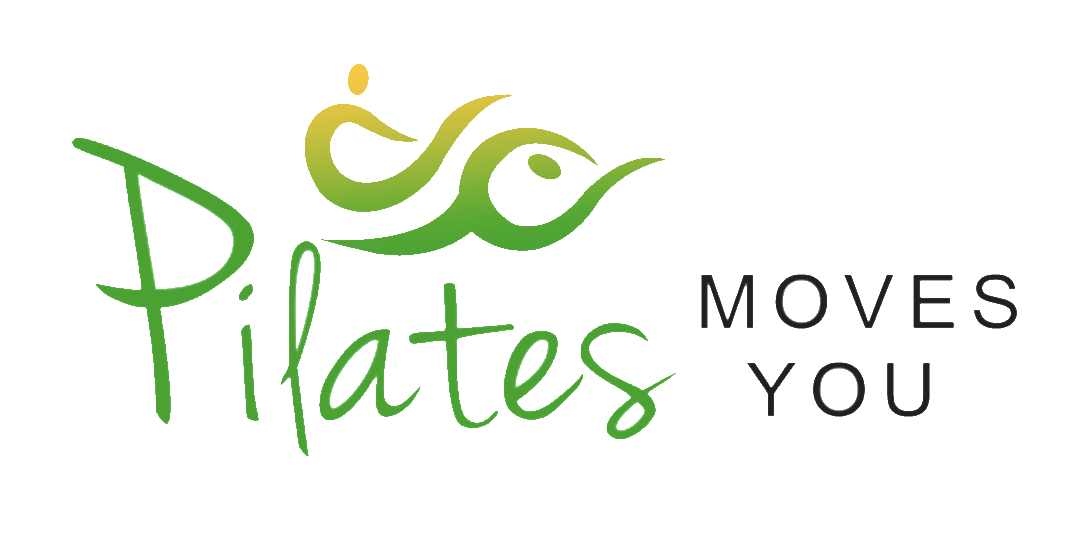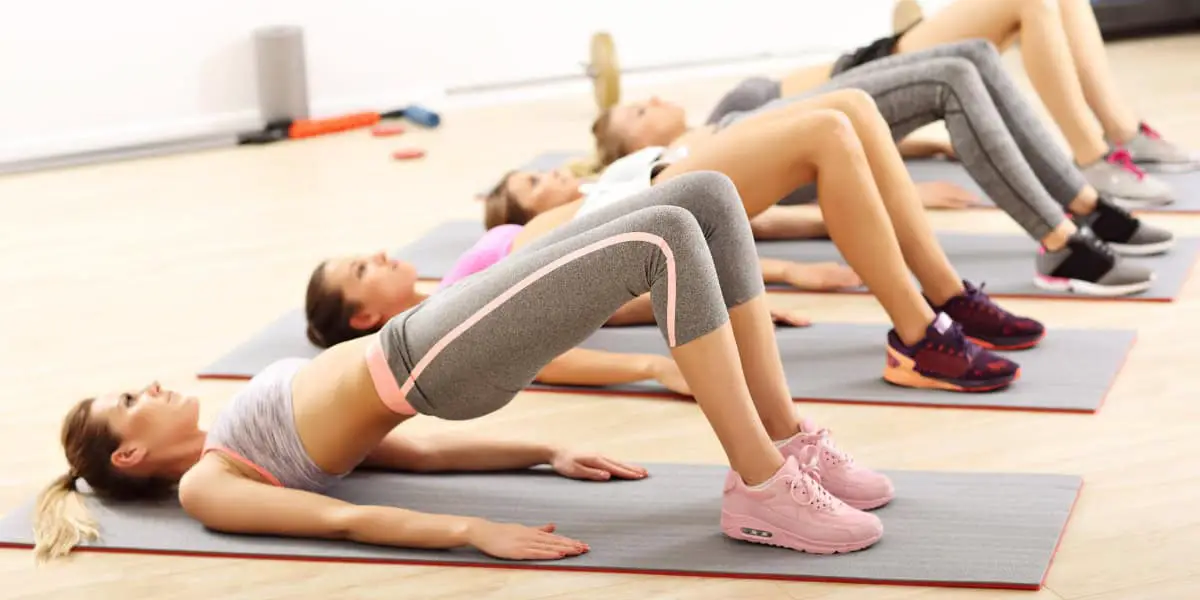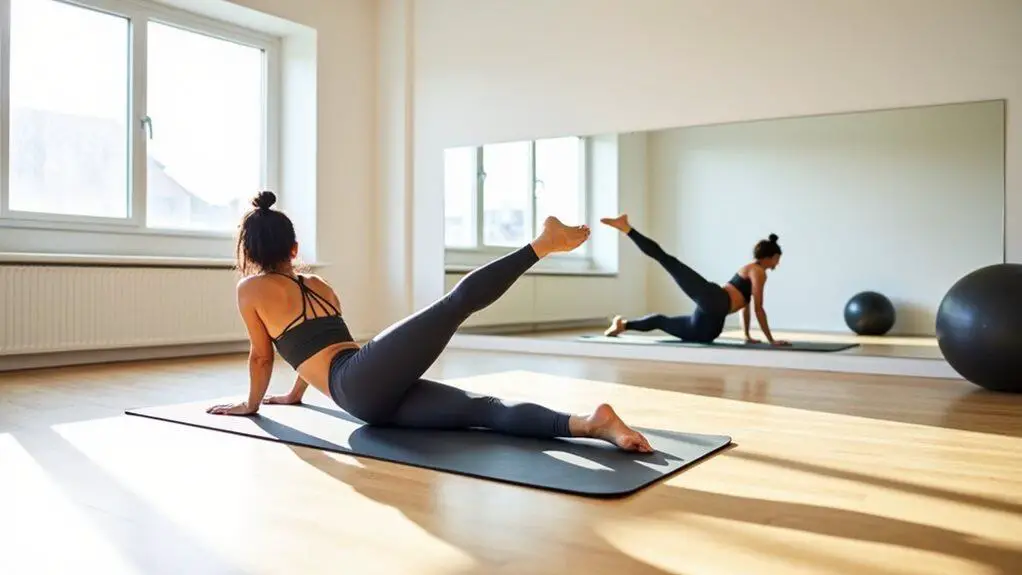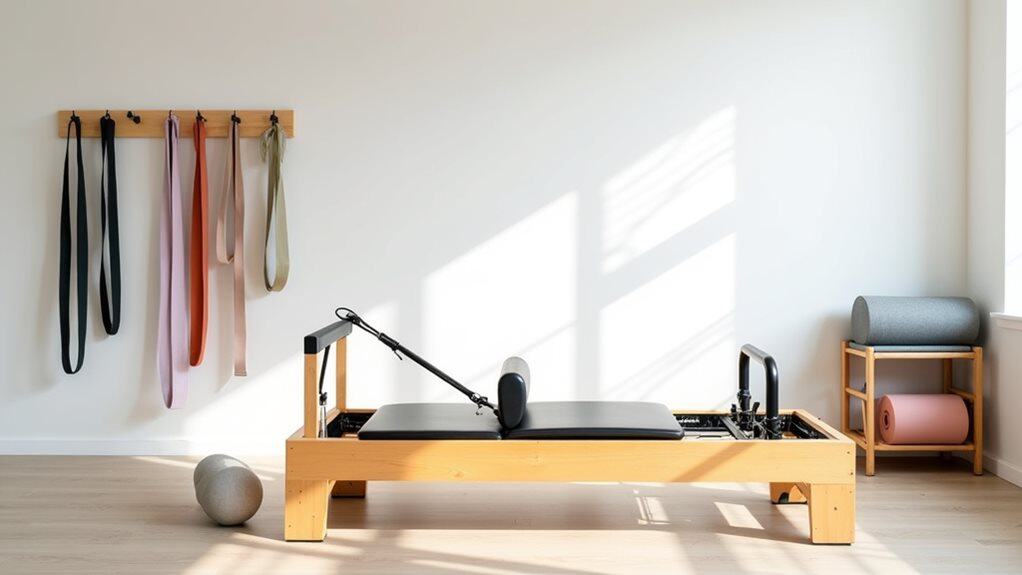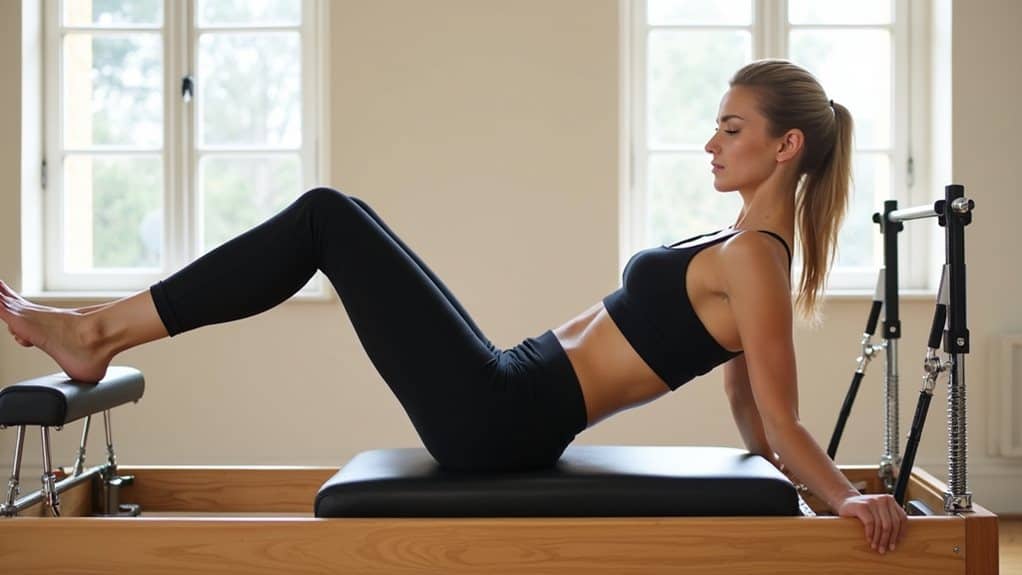Pilates has become a popular workout choice in recent years, and for good reason! This form of exercise is focused on strengthening the core, which can improve endurance and strength. With so much movement, a lot of people wonder if Pilates is classed as a dynamic workout.
Pilates is a dynamic workout because it involves movement in every direction, including forward, backward, side to side, and up and down. This helps strengthen muscles throughout the entire body.
Plus, over time you’ll find that you won’t be as easily fatigued when carrying out everyday tasks. In addition, Pilates can help correct muscular imbalances in your lower back, meaning you’ll look taller (and more confident) overall!
A one-hour session of Dynamic Pilates can burn up to 300 calories. For weight-watching fitness buffs, this makes it an excellent workout choice for losing weight. But even if you’re not concerned with your figure, Dynamic Pilates has plenty of other benefits to offer. It helps improve breathing and lung capacity, which in turn increases energy levels while at work or at rest.
What is dynamic training?
I appreciate the average person isn’t going to ask if Pilates is a dynamic workout; they’re more likely to ask what is dynamic training.
Dynamic training is active movement with an eccentric (muscle lengthening) force followed by a concentric (muscle shortening) contraction. It can also be explained as “movement under load.”
This type of training recruits more muscle fibers than traditional exercises because you are working against resistance throughout the entire range of motion.
As a result, dynamic workouts help build strength, power, and endurance while improving joint stability and mobility.
What is dynamic exercise?
Dynamic exercise is a type of exercise that stresses the body by using varying levels of intensity, speed, and movement.
This type of exercise helps to improve overall fitness and can often be used in combination with other exercises to create a more tailored program.
Dynamic exercises help to condition the muscles, increase blood flow, and promote better movement. This type of training uses natural muscle movements to maintain good blood flow to our muscles, which in turn helps us move more efficiently and helps prevent injuries.
What are the benefits of dynamic training?
Dynamic training has been shown to improve athletic performance, especially endurance.
It is a type of exercise that combines resistance training and aerobic exercises into one workout session. This type of training is becoming increasingly popular among athletes and fitness enthusiasts.
Here are five benefits of dynamic training:
1. Dynamic Training Improves Strength
Dynamic training helps you build lean muscle tissue, which is denser and stronger than fat tissue. This means that you’ll be stronger and able to lift heavier weights.
Fat tissue doesn’t provide much support for muscles, so it makes them weaker. This is especially true for those who have gained weight after pregnancy. If you haven’t lost any weight since becoming pregnant, you may find yourself unable to perform certain exercises without feeling pain.
2. Dynamic Training Builds Endurance
Endurance is defined as the ability to sustain an activity over a prolonged period of time. This means that you can exercise longer without tiring.
For example, running a marathon takes endurance. Running a mile takes stamina.
Dynamic training allows you to train longer without getting tired.
3. Dynamic Training Increases Flexibility
When you stretch, you temporarily lengthen the length of your muscles and connective tissues.
Stretching helps prevent injuries and prevents soreness after exercising. Stretching also reduces the likelihood of injury.
Dynamic stretching involves moving your joints through a full range of motion. By doing this, you can increase flexibility.
4. Dynamic Training Helps Improve Balance
Balance refers to maintaining stability while standing or walking. Poor balance often leads to falls. Falls are common among older adults. They can cause serious injuries and even death.
A study published in the Journal of Physical Therapy Science found that dynamic training improved balance in elderly adults.
These findings suggest that dynamic training should be considered as part of a comprehensive program designed to maintain mobility and independence in older adults.
5. Dynamic Training Makes You More Energetic
When you work out, your body releases endorphins. Endorphins are chemicals that make you feel happy and energetic.
Endorphins are released when you’re physically active. When you do dynamic training, you get to release endorphins throughout the day.
You might notice that you feel happier and more energized after working out.
What is Pilates?
Pilates is a system of exercises that emphasizes controlled movement and stretching. It was developed by Joseph Pilates in the early 20th century as a form of rehabilitation, and it has become popular today for its physical fitness benefits.
What are the benefits of Pilates?
There are many benefits to Pilates, including physical and mental health improvements. First and foremost, Pilates helps people maintain good blood flow. Good blood flow is crucial in maintaining flexibility and mobility in your joints.
Additionally, Pilates involves movement, not just a single static position. This is important because it keeps your body moving and prevents stagnation.
Stretching can help as well, but the strength of a Pilates workout gives us the best results. When you stretch your body releases serotonin which can reduce feelings of depression and anxiety, resulting in a better mental state overall.
Additionally, stretching increases the release of endorphins, which are hormones that have pain-relieving effects similar to morphine.
Lastly, regular exercise like Pilates builds muscle memory, so you’ll be less likely to injure yourself in the future.
Are there any specific equipment or clothing requirements for doing Pilates?
There are no specific equipment or clothing requirements for doing Pilates. However, many people find it helpful to have a mat and some light weights.
In terms of clothing, anything comfortable will do, some people choose to do Pilates barefoot, while others prefer to wear socks or shoes. It’s really up to you! Check out my full guide: What are the best clothes for Pilates?
As for equipment, most people find it helpful to have a mat and some light weights. Anything else is optional: you can use resistance bands, medicine balls, or even just your own body weight to create resistance.
Can everyone do Pilates, or are there some people who should not do it?
Pilates has been around for many years and is an exercise that can be beneficial for people with hip issues and injury recovery.
However, it is important to consult a qualified practitioner to make sure the movements are safe for their body type.
Traditional Pilates is good for older populations, injury prevention, rehabilitation settings and fitness-oriented people who want to sweat!
Pilates is great for seniors, as I discuss in Is Pilates Suitable for the Elderly? The Benefits of Chair and Mat Pilates for Seniors
For those looking to take things to the next level, a true dynamic reformer class is more challenging than a regular Pilates class, testing your endurance and strength, but also your focus and concentration.
Pilates reformer classes are designed for people of varying fitness levels; however, some individuals may not want to do the class because it is too challenging.
Overall Pilates is a great option for anyone who wants to work on their core strength and muscle tone
Final Thoughts
In Pilates, we practice exercises that work multiple muscle groups. This makes it a dynamic workout, and that’s something we desperately need.
Your body doesn’t care if you work out standing up or lying down. Your body doesn’t care if it’s raining or snowing. Your body doesn’t even care whether you’re tired or hungry.
All it cares about is movement. And Pilates gives you one of the most dynamic workout you can possibly have.
With Pilates, you’re always improving. Even after several years of practice, you can always do something better. And that’s the beauty of it.
You can always improve.
Sources
https://www.thieme-connect.com/products/ejournals/abstract/10.1055/a-0863-4539
https://www.ncbi.nlm.nih.gov/pmc/articles/PMC3752196/
https://www.ncbi.nlm.nih.gov/pmc/articles/PMC8197353/
https://journals.physiology.org/doi/full/10.1152/japplphysiol.00320.2003
https://www.jstage.jst.go.jp/article/jpts/28/1/28_jpts-2015-702/_article/-char/ja/
https://www.jstage.jst.go.jp/article/jpts/28/6/28_jpts-2016-060/_article/-char/ja/
